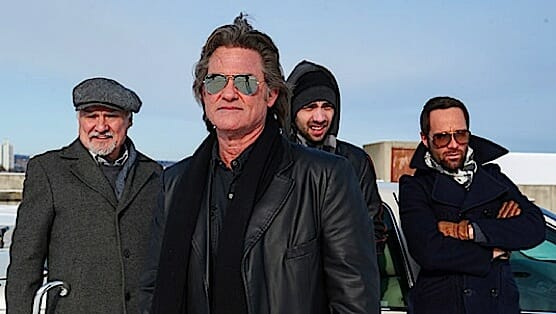The Art of the Steal

The Art of the Steal boasts one of those interchangeable and instantly forgettable titles, though in its mind it’s a clever double entendre, since writer-director Jonathan Sobol’s con movie centers around the theft of paintings, sculpture and a Gutenberg-printed fifth holy gospel. See … art! How one feels about that wink and nudge, as well as their personal threshold for colorful characters over engaging plotting, will likely dictate the level of enjoyment they obtain from this derivative but hard-working crime comedy.
Rakish wheelman Crunch Calhoun (Kurt Russell) is the de facto leader of one of those groups of high-end honorable thieves—a collection that includes his half-brother Nicky (Matt Dillon), French forgery specialist Guy (Chris Diamantopolous) and obligatory old coot Paddy (Kenneth Welsh). When one of their schemes involving a pointillist masterpiece goes sideways and Nicky gets nabbed, he rolls on Crunch in order to avoid a hefty prison term.
Much later, after getting out of a five-plus-year stint in a Polish prison, Crunch has returned stateside and taken to taking motorcycle dives in a traveling circus, where he works alongside girlfriend Lola (Katheryn Winnick) and mentee Francie (Jay Baruchel). When an aggrieved party comes looking for Nicky to settle a score, Crunch reluctantly assents to putting his old crew back together and working to smuggle a rare book across the Canadian border to a buyer, all while a perpetually exasperated Interpol agent (Jason Jones) and a surly ex-con (Terrence Stamp) roped into working with him in order to secure a parole, try to unravel the case.
Sobol doesn’t go full Guy Ritchie, but early on there are nicknames and textual overlays that introduce Nicky as “the Idea Man,” Paddy as “the Rolodex,” and so on. Once the movie hits its stride, the split screens subside a bit, but The Art of the Steal exercises a light stylishness throughout, never betraying its essential moviedom. Cinematographer Adam Swica and production designer Matthew Davies embrace ironic splashes of color in monochromatic settings, and make nice contrast of open and contained spaces. Meanwhile, it’s also clear that composer Grayson Matthews studied the Ocean’s Eleven score.
-

-

-

-

-

-

-

-

-

-

-

-

-

-

-

-

-

-

-

-

-

-

-

-

-

-

-

-

-

-

-

-

-

-

-

-

-

-

-

-








































